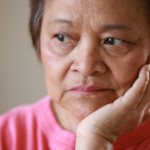
Burning mouth syndrome (BMS) is a chronic pain syndrome characterised by burning of the oral mucosa with the absence of signs of an organic cause (Aravindhan et al 2014; Dental Elf – 12th June 2017). There are several classification systems that acknowledge its variable pattern and association with systemic risk factors. There is a female predilection with occurrence from commonly reported in middle-aged to elderly women. The pathophysiology is not understood however psychosocial, hormonal and neuropathic triggers have been postulated. Current treatment is based on symptom control as often, no treatable cause can be identified. Studies have identified insufficient evidence for the effectiveness of current treatments (Dental Elf – 28th November 2016). Therefore, this review compares the effects of several treatment options for patients with BMS evaluated in randomised control trials to help inform their efficacy.
Methods
Only randomised control trials including patients with primary or idiopathic BMS that compared one or more treatment strategies with a placebo group were included. In addition, studies needed to evaluate the performance of singular salivary biomarkers (index test) against any type of tissue biopsy with histopathological examination (as the reference standard). Studies assessing combined salivary biomarkers or patients with oral potentially malignant disorders were excluded.
The Cochrane Library and Web of Science were the databases searched up to 2019 and updated in 2020. The outcome measures included relief of pain/burning sensation and changes in psychosocial factors. The Cochrane Collaboration tool was used for all included studies to assess risk of bias.
Results
- Following removal of duplicates, 662 articles were retrieved across the initial database search. After implementation of the inclusion and exclusion criteria, 30 studies were included in the review.
- The use of alpha-lipoic acid (with or without a combination of vitamins and folic acid) did not produce any statistically differences however in some studies, an improvement was observed.
- The ‘Catauma’ herbal compound showed a significant improvement in the intervention group compared to the control group after 4 and 8 weeks of use.
- Gabapentin and Clonazepam were associated with significant reductions in BMS however antidepressants (e.g. Trazadone) were not associated with any significant changes.
- Analgesics such as lidocaine nerve block in combination with systemic clonazepam compared to saline was reported to show a significant decrease after 21 days of topical clonazepam treatment. Bupivacaine lozenges were also associated with a significant decrease in BMS.
- Capsaicin as an oral rinse reported significantly higher levels of pain reduction compared with controls however it is of note that patient dropouts occurred due to intolerance of the burning sensation of the rinse.
- Extra-virgin olive oil with lycopene, urea, melatonin and 2% Chamaemelum nobile was ineffective as in the treatment of BMS.
- Full remission of pain was reported with treatment by a sham laser and significant reductions in pain in laser-treated patients regardless of dose.
- Two studies used psychological therapy and reported significantly reducing the intensity of symptoms.
- The risk of bias assessment determined the risk of selection bias as low in 18 studies and unclear in 12 studies, performance bias as low in 66.7% of all studies and risk of detection bias high in 6 studies and unclear 13 studies. The attrition bias risk and risk of selective reporting were evaluated as high in 7 and 8 of 30 reports respectively.
Conclusions
The authors concluded: –
…the most effective therapeutic modality in BMS in Clonazepam.
Comments
This systematic review undertakes a thorough review of literature however the lack of quantitative analysis precludes the aims of the studies being met. A narrative description of the included studies was well provided however the conclusions can only be drawn from each included study and not the effects pooled together. The included studies had wide ranges of outcome assessment including treatment and patient cohort. There is a need for high quality research in this area to identify the most effective treatment for BMS.
Links
Primary paper
Ślebioda Z, Lukaszewska-Kuska M, Dorocka-Bobkowska B. Evaluation of the efficacy of treatment modalities in burning mouth syndrome-A systematic review. J Oral Rehabil. 2020 Nov;47(11):1435-1447. doi: 10.1111/joor.13102. Epub 2020 Oct 6. PMID: 32979878. https://pubmed.ncbi.nlm.nih.gov/32979878/
Other references
Aravindhan, R., Vidyalakshmi, S., Kumar, M. S., Satheesh, C., Balasubramanium, A. M., & Prasad, V. S. (2014). Burning mouth syndrome: A review on its diagnostic and therapeutic approach. Journal of pharmacy & bioallied sciences, 6(Suppl 1), S21–S25. https://doi.org/10.4103/0975-7406.137255 https://www.ncbi.nlm.nih.gov/pmc/articles/PMC4157273/
Dental Elf – 28th November 2016
Burning mouth syndrome: insufficient evidence for effectiveness of current treatments
Dental Elf – 12th June 2017
